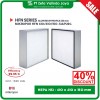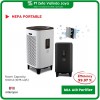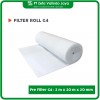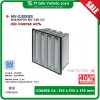Differences in Air Filter Standards: ASHRAE 52.2 (MERV) vs ISO 16890
Air Filter Standards : ISO 16890 vs ASHRAE 52.5 (MERV)
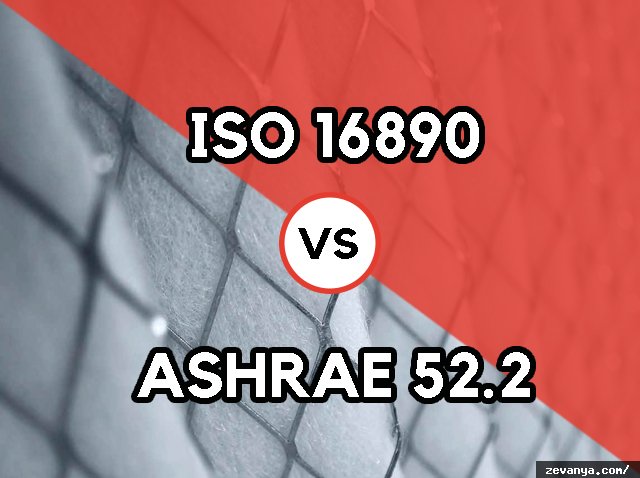
In the world of air filtration, understanding the standards that measure filter performance is crucial. As the sole agent for Mikropor in Indonesia, we will delve into the differences between the ISO 16890 standard and the ASHRAE 52.2 (MERV) rating system, and why choosing Mikropor filters ensures superior air quality and energy efficiency.
ISO 16890: The Global Standard for Air Filters
The ISO 16890 standard, introduced in 2016, has become the global benchmark for evaluating air filter performance. It classifies filters based on their ability to capture particulate matter (PM) of different sizes:
- ISO Coarse: Filters that capture large particles above 10 micrometers (µm).
- ISO ePM10: Filters that capture particles up to 10 µm, including pollen and mold spores.
- ISO ePM2.5: Filters that capture particles up to 2.5 µm, such as bacteria and fine dust.
- ISO ePM1: Filters that capture particles up to 1 µm, including some viruses and ultra-fine dust.
ASHRAE 52.2 (MERV): The American Standard
The ASHRAE 52.2 standard, developed by the American Society of Heating, Refrigerating and Air-Conditioning Engineers (ASHRAE), uses the MERV (Minimum Efficiency Reporting Value) rating system to measure air filter performance. MERV rates filters on a scale from 1 to 16 based on their ability to capture particles of different sizes:
- MERV 1-4: Basic filtration, capturing particles larger than 10 µm.
- MERV 5-8: Improved residential and commercial filtration, capturing particles between 3 and 10 µm.
- MERV 9-12: Superior residential and better commercial filtration, capturing particles between 1 and 3 µm.
- MERV 13-16: Hospital and general surgery level filtration, capturing particles between 0.3 and 1 µm.
Key Differences Between ISO 16890 and ASHRAE 52.2 (MERV)
1. Global vs. Regional
- ISO 16890 is a globally recognized standard, making it ideal for international applications and comparisons.
- ASHRAE 52.2 (MERV) is primarily used in the United States, offering a well-established metric for American HVAC systems.
2. Particle Size Range
- ISO 16890 provides a more detailed classification by categorizing filters based on their efficiency in capturing particles of specific sizes (PM10, PM2.5, PM1).
- ASHRAE 52.2 (MERV) offers a broader range of efficiency ratings but less granularity in particle size distinction.
3. Testing Methods
- ISO 16890 tests filters in real-life conditions, considering factors like air velocity and particulate composition, providing a more comprehensive performance evaluation.
- ASHRAE 52.2 (MERV) tests filters under controlled laboratory conditions, which may not fully represent actual operational environments.
Why Mikropor Filters?
Mikropor filters are designed to meet and exceed the stringent requirements of both ISO 16890 and ASHRAE 52.2 (MERV) standards.
- Comprehensive Testing: Mikropor utilizes the latest EN 779:2012 / ISO 16890 test systems to ensure our filters perform exceptionally well under real-life conditions.
- High Efficiency : Our filters are engineered to provide maximum particulate removal, ensuring clean and safe air for all applications.
- Energy Saving : By optimizing air flow and reducing pressure drops, Mikropor filters significantly lower energy consumption and operational costs.
- Certified Quality : All Mikropor filters are certified to meet international standards, guaranteeing reliable and consistent performance.
Understanding the differences between ISO 16890 and ASHRAE 52.2 (MERV) standards helps in making informed decisions about air filtration. Mikropor filters which meet the ISO 16890 standard and high quality be the best solution for achieving optimal air quality and energy efficiency.
For more information on Mikropor filters and how they can benefit your operations, please contact us at 021 8873 531 or email us at info@zevanya.com or buy MIKROPOR filter here.


